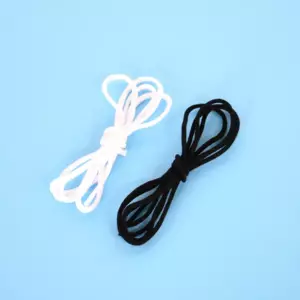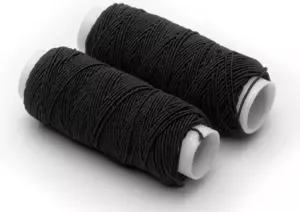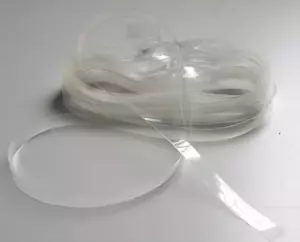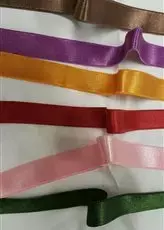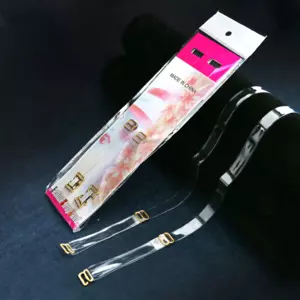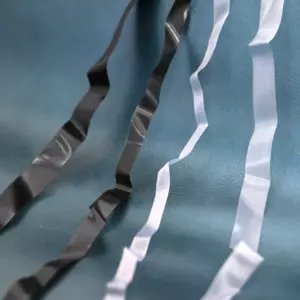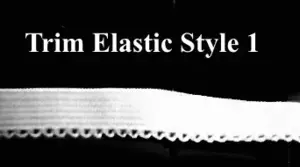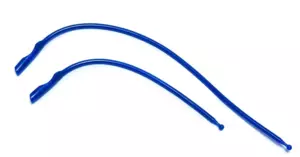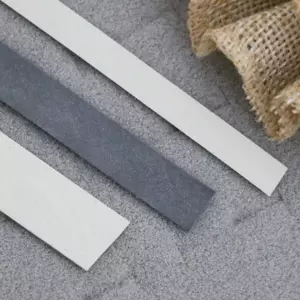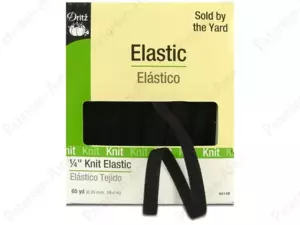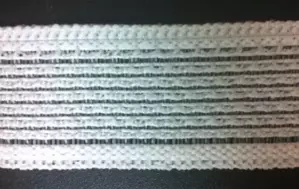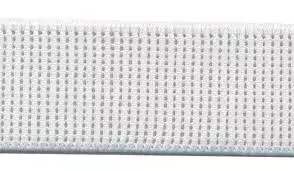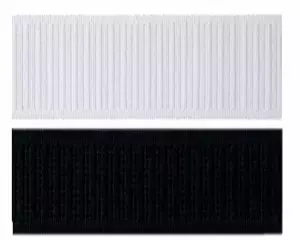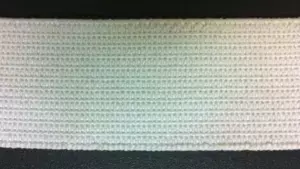Elastic is the simple notion that’s used in so many different things. From clothing to accessories, wrap bandages, shoes, boots, backpacks, and luggage, you’ll find some form of elastic. It’s useful anywhere you need to add stretch and ease to a project. When elastic is correctly installed, it allows for a range of movement while keeping a garment in place.
Invented in 1820 by Thomas Hancock, elastic was initially used as a fastener in gloves, stockings, shoes, and suspenders. Since then, elastic has become a universal piece of sewing and manufacturing that does everything from closing a garment to making life-saving medical equipment.
Elastic has come a long way since its invention. Made from a combination of core threads of spandex or rubber that’s woven into cotton, nylon, or polyester, it’s then knitted, woven, or braided. While the sewing trade has long enjoyed a wide range of types, sizes, styles, and colors, it’s only in recent years that hobbyists and home sewers have had access to some of the same newly available elastic options.
What Kinds of Projects Utilize Elastic?
Elastic has a wide range of uses, but is most commonly used in:
- Athletic wear (swimsuits, dance costumes, yoga gear)
- Lingerie/underwear
- Hoodies
- Sweats
- Pajamas and pajama-style pants
- Baby clothes and gear
- T-shirts
- Casual wear
Other Uses for Elastic Include:
- Belts
- Hats
- Suspenders
- Shoes and boots
- Bags, backpacks, and luggage
- Medical items, such as bandages and other “clingy” items
Elastic’s versatility means it can be used in a wide range of projects, from apparel to other items like face masks and safety equipment. Anywhere holding and flexibility is needed in an item is where you’ll find some type of elastic.
Types of Elastic
Several types of elastic are suitable for garments, and each one has a specific application. Below you will find the most common types of elastic used in sewing projects:
- Braided elastic is typically lightweight, and it narrows or curls when it stretches. You can insert it into a casing or sew it directly onto the wrong side of the fabric. Braided elastic is made using materials such as polyester and rubber. It's most commonly added to waistbands, sleeves, necklines, and leg bands, and it has a long lifespan. Since it's made with coverings & rubbers, a braided elastic is more shrink-resistant and will typically be unaffected by saltwater and chlorine. Goldstar tool offers black and white braided elastics for sale.
- Knitted elastic resists curling when stretched. It is a very soft and comfortable option that is used in a variety of applications, including waistbands, gloves, suspenders, belts, face mask straps, sporting goods, pajamas, sweatbands, horse blankets, elastic pockets, and swimsuits. Knitted elastic can be used in garments with and without casings, and it is comfortable when placed directly on the skin.
- Non-roll woven elastic remains flat and unrolled when inserted into casings, but it isn’t suitable for a direct application because of its slight abrasiveness. It's excellent for waistbands in skirts, slacks, shorts, pajama or legging waistbands, children's clothing, and sports bras. This elastic is a firmer medium weight that resists rolling or twisting. It’s also shrink resistant, machine washable and dryable, and usually unaffected by chlorine bleach.
- Elastic thread and cord is comfortable against the skin and has optimal give. Its small size makes it perfect for doll clothes and baby garments. It’s also used for buttonhole loops on garments where a buttonhole may not work, such as high-necked tops and dresses, as well as the backs of bridal gowns.
- Clear or silicone elastic (also called “silicone elastin”) is a great way to add stretch discreetly. Silicone elastic is available in both black and clear and in ¼” and ⅜” sizes, making it great for knits and swimwear. It’s ideal for stabilizing necks, shoulder seams, and is chlorine-safe, as well as dry-cleanable. Silicone or clear elastic may also be suitable for those with allergies to latex.
- Elastic or Stretch Thread is a specialty item that can be used in a number of ways. You can use it to easily stitch up knit garments with a straight stitch and reduce broken stitches. It’s also the best and fastest way to create shirring for sundresses and other garments quickly. It’s used both in the top thread and the bobbin for a perfectly gathered top that stretches easily.
Choosing the Right Size Elastic for Your Project
Once you’ve decided what type of elastic best suits your project, you’ll need to know what size you need. If you’re sewing from a pattern, it will tell you what size elastic you’ll need. However, if you’re designing your own pattern for a project, you’ll need to determine the right size as well as what type. Below is a list of recommended widths for different applications:
- Waistbands – ¾” to 1” (most garments), or ½” (for kids)
- Necklines – ⅛” to ¼”
- Sleeves – ⅛” to ½”
- Swimwear – ¼” to ¾”
Any elastic you use should be able to withstand regular washing and drying, including activewear like bike shorts and yoga wear. Swimsuits also need elastic that can withstand repeated exposure to saltwater and pool chlorine. One of our best elastics for swimsuits is our Small Roll Woven Elastic Girdle/Sport. It’s soft, and comes in two sizes, but has additional support things like swimwear and girdles.
Lingerie and other delicate projects call for Trim Elastic. It’s lightweight, available in white, in seven sizes and styles to put a finishing touch on your designs. It is also heat resistant, and best on raw edges.
Some projects just don’t look right with white or black elastic. For those projects, we offer our ½” Foldover Elastic in ten colors in addition to black and white, and it is sold by the yard. It’s perfect for covering raw edges and can be used in place of bias tape.
For projects that call for both waistline elastic and a drawstring, our Draw Cord With Elastic can take care of two tasks at one time. It’s available in black and white in 1½” and 2” widths, in lengths from 10 to 500 yards.
Elastic Colors
GoldStar Tool sells a large assortment of elastic colors, making it easy to match to any sewing project. We have the following colors in stock:
- Snow White: White as fresh as snow.
- Off White: A soft, subtle white.
- Black: Classic for everything.
- Brown: Earthy, warm for natural looks.
- Yellow: Bright, sunny for happy designs
- Orange: Bold, energetic for accents.
- Pink: Soft, playful for fun projects.
- Light Blue: Sky blue.
- Navy Blue: Deep blue for serious looks.
- Purple: Royal, rich for a regal touch.
- Red: Striking, passionate for big statements.
- Light Green: Refreshing, calming for nature.
- Dark Green: Forest green for grounded pieces.
Whether you’re working on fashion, jewelry, home decor, or crafts our color ranges will complement your creative vision.
Tips for Using and Sewing Elastic
Elastic sewing takes a little practice to get it right. If you’re not comfortable sewing with it, try these tips to make it easier.
- Sew with a ballpoint needle.
- Choose a thread that’s compatible with your fabric.
- The elastic must be loose enough for the finished product to be comfortable, but taut enough to stop the fabric from drooping.
- Test your elastic stretch before cutting it to determine the correct amount.
- Elastic must be smaller than the edge it’s applied to in order to keep the garment or other objects in place.
- Ideally, use either a zig-zag stitch or a long straight stitch for the elastic.
- If a project calls for the direct application of elastic instead of a casing, cut it about 8% shorter than the ideal length to allow for stretching during stitching onto the fabric.
- Clear elastic requires a little more patience. If it’s sticking to your presser foot, try one of our non-stick presser feet with Teflon.
Once you get the hang of sewing elastic, you’ll be handling it like a pro in no time.
Elastic Tools
In addition to our range of elastics, we also have tools and machines to make working with elastic and drawstring a little easier.
Our adjustable elastic foot for industrial 6.4mm machines make sewing elastic as easy as stitching a seam for ¼, ⅜”, and ½” elastics with adjustable tension with a simple turn of a screw. Throw the elastic into the foot, attach it to the machine, and start stitching. We also carry a high-shank elastic shirring foot to apply it and control the amount of stretching.
For industrial single-needle drop feed lockstitch machines, this Elastic Tension Guide Bracket will make stretching the elastic during sewing faster and easier. It works on any type of elastic, and sizes up to 2½”. This bracket doesn’t attach to the machine like a foot, but can be bolted to the machine table, or quickly taped down to use and removed when you’re finished.
Threading elastic and ribbon into a casing is made a lot easier with a set of these. With three different sizes of threader, you’ll be able to add elastics of ⅛″, ½” and ¾” widths quickly and easily without snagging or twisting them in the process. A lost drawstring in a casing is easy to retrieve with our drawstring threaders. This set of two makes adding a drawstring easier, as well as fishing out the end of a lost drawstring quickly.
Our ¼” Hanger Tape is technically not elastic, but it does have a stretch. It’s stitched into the shoulders of dresses and other items to hang them up carefully. But Hanger Tape is also used to stabilize sheer fabrics during the sewing process. It’s sold by the yard on our website where you can buy as much or as little as you need (minimum one-yard purchase.)
Why Buy Elastic From Goldstar Tool?
We have one of the internet's biggest selections of elastic supplies in stock and available for same-day shipping. Have questions, or need something specific? Call us at 1-800-868-4419, or use our online contact form to get in touch.
What type of raw materials does Goldstar use to manufacture elastic products?
We use several types of materials to manufacture elastics. For our clear elastics, we use a proprietary silicon material. We use spandex and rubber for our plastic elastics, which we encase inside polyester and cotton. By using different types of materials, we make our elastics safe and easy to use.
What types of sewing machines are compatible with Elastics?
Most sewing machines can be used to sew elastics. Goldstar sells and manufactures a variety of presser feet (for different types of projects) that can be attached to any serger or coverstitch machine.
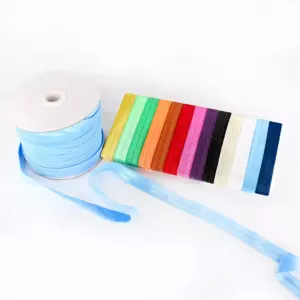
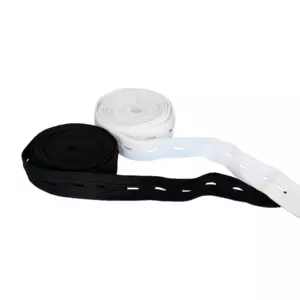
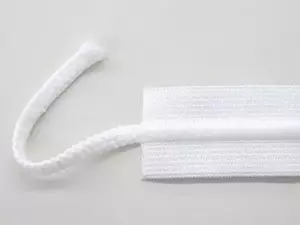
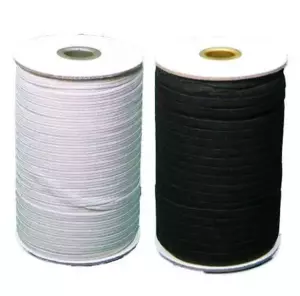
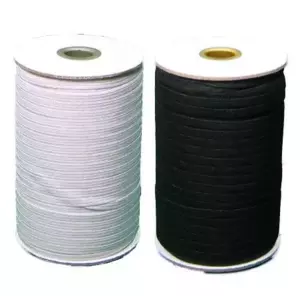
.webp)
